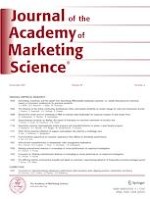03.06.2021 | Original Empirical Research
Advertising, incentives, and the upsell: how advertising differentially moderates customer- vs. retailer-directed price incentives’ impact on consumers’ preferences for premium products
Erschienen in: Journal of the Academy of Marketing Science | Ausgabe 6/2021
EinloggenAktivieren Sie unsere intelligente Suche, um passende Fachinhalte oder Patente zu finden.
Wählen Sie Textabschnitte aus um mit Künstlicher Intelligenz passenden Patente zu finden. powered by
Markieren Sie Textabschnitte, um KI-gestützt weitere passende Inhalte zu finden. powered by
